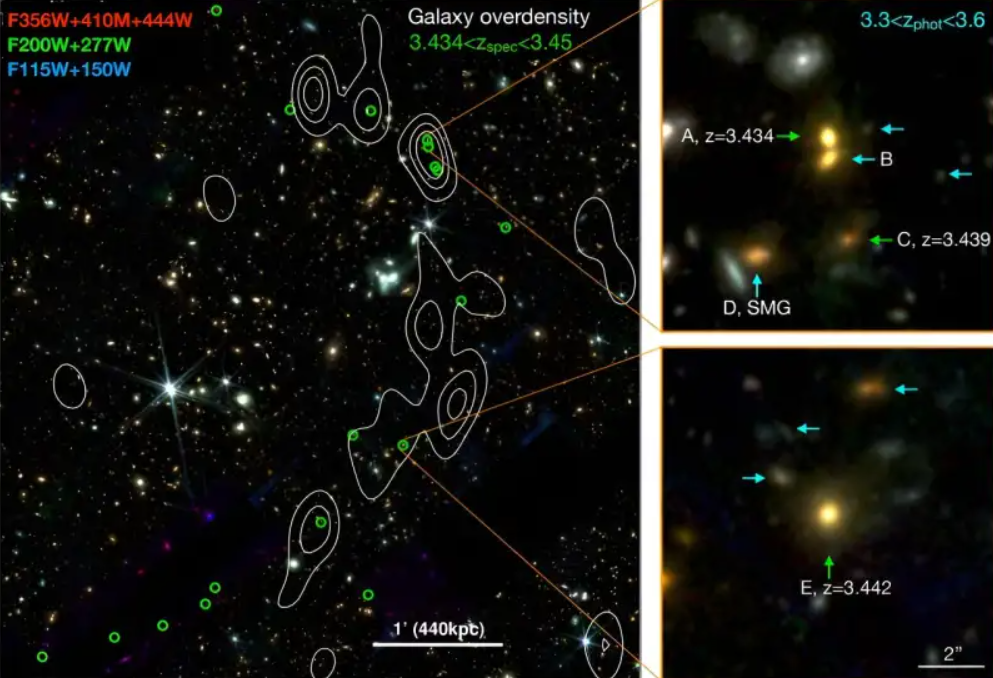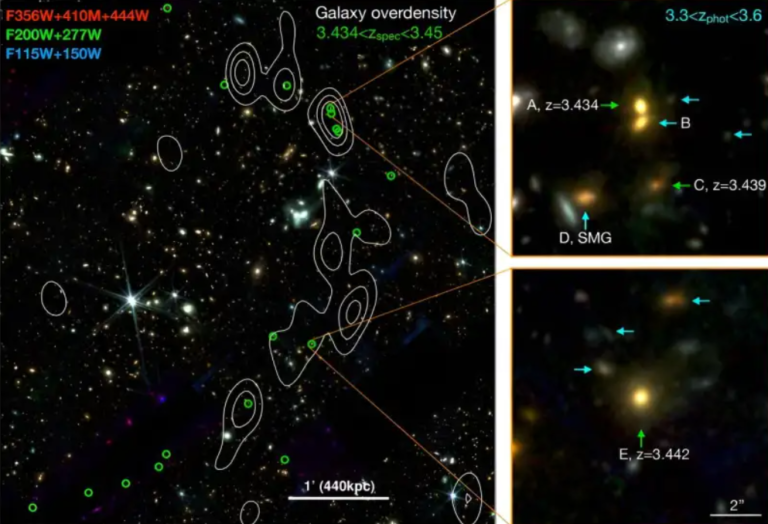The ‘Cosmic Vine’: Astronomers Identify a Vast Structure Housing a Minimum of 20 Massive Galaxies
An international team of astronomers has reported the discovery of a large-scale structure named the “Cosmic Vine,” comprising at least 20 massive galaxies. This structure, detected at a redshift of 3.44 in the Extended Groth Strip (EGS) field observed with the James Webb Space Telescope (JWST) and supplemented by data from the Hubble Space Telescope (HST), spans about 13 million physical light years. The findings, outlined in a paper published on the pre-print server arXiv on Nov. 8, shed light on the formation and evolution of galaxies and large-scale structures in the universe.

Massive and dense structures of galaxies are considered precursors to galaxy clusters, the most massive gravitationally-bound systems. The identification and detailed investigation of such structures are crucial for advancing our understanding of galaxy formation and evolution. The newly discovered Cosmic Vine is an extensive and elongated structure, surpassing other compact galaxy groups and proto-clusters at redshifts above 3.0. It includes at least 20 massive galaxies and six galaxy overdensities, with a total mass estimated at 260 billion solar masses.
The two most massive galaxies within the structure, named Galaxy A and Galaxy E, exhibit quiescent behavior, indicating low star-formation rates. The researchers suggest that the Cosmic Vine is in the process of forming a galaxy cluster and confirm that massive quiescent galaxies can develop within growing large-scale structures. Additionally, they propose further investigation of quiescent cluster galaxies at high redshifts to enhance our understanding of the formation and evolution of the universe’s largest structures. The recently-launched ESA’s Euclid space telescope is expected to contribute to such studies, given its scientific goals focused on exploring the structure and history of the cosmic web.
This article is republished from PhysORG under a Creative Commons license. Read the original article.
Do not forget to share your opinion with us to provide you with the best posts !




0 Comments